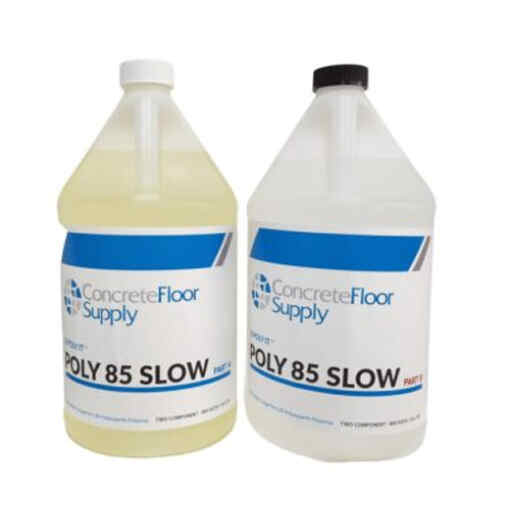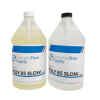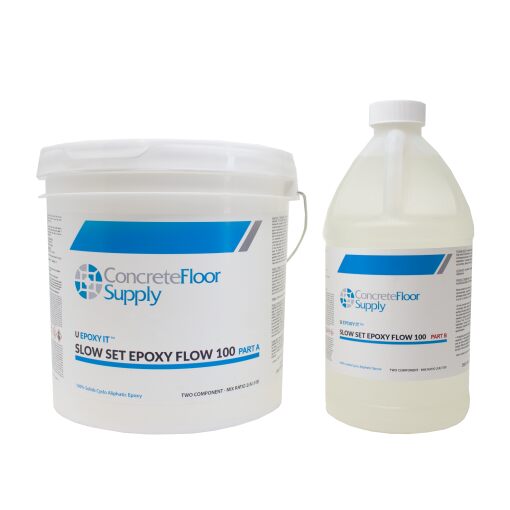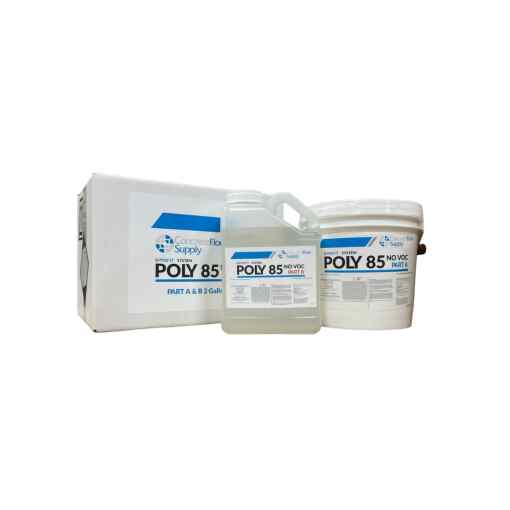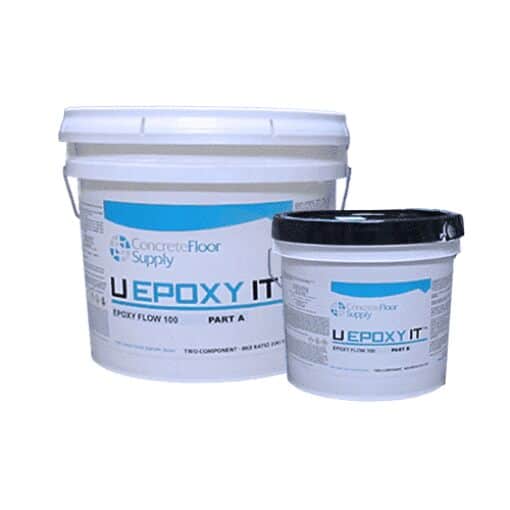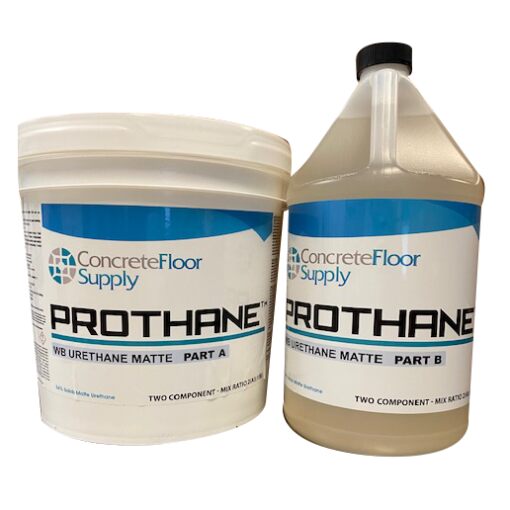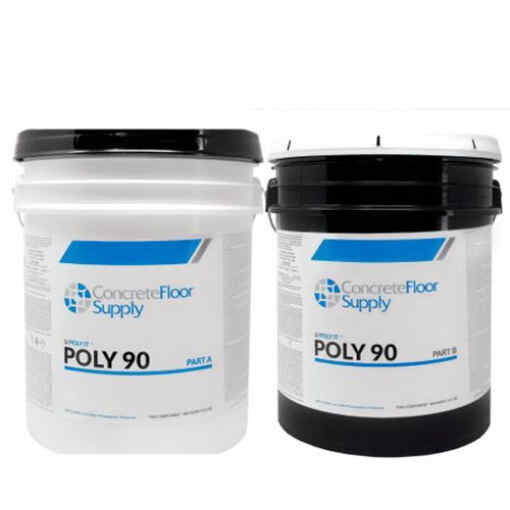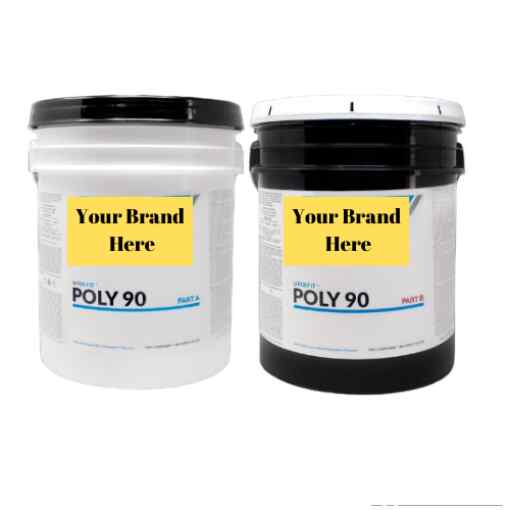Poly 85 Slow Polyaspartic Concrete Coating
$229.00 – $999.00
- Excellent top coat with great work time…45 minutes on the floor!
- UV Stable
- Super low odor
- VOC compliant for all of the U.S.
- Description
- Dry Times
- Data
- How to Use Poly 85
- Video
- POLYASPARTIC COATING FAQS
Poly 85 Slow is a super low odor two-component polyaspartic polyurea ideal for spaces where work time and odor is of great concern. This is a superior topcoat for flake floor systems. Poly 85 Slow utilizes a special blend of low odor and UV stable solvents to create a unique coating with low viscosity, a long pot life, excellent work time (45 minutes!) and a fast return to service (light foot traffic in less than 24 hours!). It provides a high gloss clear coating and with superior penetration and bonding strength that can provide years of abrasion, impact, and wear resistance. Available in 2 Gallon and 10 gallon Kits. 1:1 mix ratio
| Pot Life | 45 Minutes |
| Tack Free | 7-9 Hours |
| Light Foot Traffic | 10-12 Hours |
| Heavy Traffic | 48-72 Hours |
| Recoat Time Window | 9-24 Hours |
SURFACE PREPARATION: The concrete surface must be deemed mechanically and structurally sound, completely clean, and dry. To achieve the above desired results, a mechanical grinding or shot blast method should be performed to an achieve a 50-100 grit profile to insure flatness of the substrate, to remove surface impurities, and to profile the surface of the floor to a CSP-2, as recommended by the ICRI Technical Guideline No. 03732. AVOID USING WATER if possible. If water is used allow 48 hours before coating.
TINTING: Tint with Poly Color pigments. Use 32 oz per 4 gallons of Poly 85 slow. Always add color to Part A and drill mix for 2 minutes prior to adding Part B. Lighter colors such as white may require 32 oz per 2 gallons. Multiple coats may be necessary for total opacity.
MIXING: If mixing less than a full kit, mix Part A & Part B separately with a stir stick, low speed mixer or vigorously shake container prior to blending the smaller kit to ensure uniform distribution of all ingredients. Proper mixing is pertinent to application success. In equal parts (1:1), mix Part A and Part B using a clean, dry mixing container. Drill mix contents approximately 1 – 3 minutes with a paddle mixer. Avoid overmixing or creating a vortex which could introduce moisture content to the mixture. No induction time is required prior to use after mixing. If integrating anti skid media agents, only do so after Parts A & B have been thoroughly mixed. Do Not Thin.
COVERAGE RATE: First Coat : 250 – 300 ft² per gallon* Optional Second Coat : 275 – 325 ft² per gallon* Over Media/Flake : 175 – 225 ft² per gallon* *Coverage rates may vary depending upon surface porosity, texture, application method and prior sealer application. Excessive build up should be avoided.
POT LIFE: Expected workable pot life (in the bucket) after mixing Part A and Part B is approximately 45 – 60 minutes at a common temperature range of 70°F – 80°F at roughly 50% relative humidity. Please note that higher temperatures and high percentages of humidity will shorten pot life, as colder temperatures and lower percentages of humidity will extend the coatings pot life. Product starts to cure quicker once it is applied to the floor.
APPLICATION INSTRUCTIONS: Over smooth surfaces: Using a brush and/or ⅜” nap shedless roller, dip and roll the mixed material from a roller pan. 18” rollers are recommended to speed up application and reduce roller marks. Roll sections at a time backing yourself out of the area and keeping a wet edge. It is recommended to work in sections using control joints as dividers. Large floors can be flat squeegeed and back rolled if desired by the installer. Apply the mixed material within the usable time frame of the pot life. Poly 85 Slow will hang out in the bucket and start to cure quicker once it hits the floor. If the material becomes thick while applying and sticking to the roller, stop applying and discard the mixed material. At this point it has exceeded its usable pot life. Do not allow it to puddle. Use a brush to remove excess coating from joints. Over Flake Systems: Apply the mixed material by pouring directly over flake and spreading with a flat squeegee and backrolling with a ⅜” roller. Apply at approximately 175-225 sq ft per gallon. Do not allow it to puddle. Use a brush to remove excess from joints.
RECOATING: If possible recoat within the suggested recoat window. If recoating outside the suggested recoat window sand using a 60-120 grit sanding screen to ensure adequate adhesion between coats. Vacuum and dry clean thoroughly before recoating. Malish Mal-Grit brushes work well to abrade textured surfaces such as flake systems.
PLEASE NOTE: Applying material outside the suggested parameters may result in product failure. It is always recommended to test the product in a small, inconspicuous area (on the same concrete substrate) for desired results prior to application. Coverage rates may vary for all coatings and substrates depending on porosity, density, texture etc. When applying, do not exceed 400 sq. ft. per gallon. Applying too thin of a coating may cause inadequate film formation or performance expectations may be limited. DO NOT USE ON BRICK. We don’t encourage use outdoors. Increased temperatures will shorten the recoat window. Decreased temperatures will lengthen recoat window.
COF WARNING: The current coefficient of friction required by the ADA is .6 on level surfaces and .8 on ramps. Concrete Floor Supply Recommends the use of slip resistant additives if needed to meet this requirement. It is the installers responsibility to provide a flooring system that meets current safety standards.
Question: What is the best way to apply Poly 85 Slow over flakes?
Answer: Squeegee and back roll over flake. Squeegee with a flat flexible squeegee with 100 percent coverage. This properly grouts the flakes and makes sure you don’t get any dry spots. As soon as you squeegee the product out, back roll it with an 18″ 3/8″ nap roller.
Question: Can you pigment Poly 85 Slow?
Answer: Yes, Poly 85 slow can be pigmented a solid color. You will mix one quart of Poly pigment to four gallons of Poly 85 Slow.
Question: Can Poly 85 Slow be used as a base coat?
Answer: Yes, Poly 85 Slow can be used as a basecoat and a topcoat.
Question: What mil thickness is ideal for Poly 85 Slow?
Answer: Around 200 sqft per gallon as a basecoat and around 150-200 sqft per gallon over a full flake broadcast. This is around 6 to 9 mils.
Question: What is the best way to clean up Poly 85 Slow?
Answer: Xylene is the preferred chemical to “clean up” Poly 85 Slow.
Question: Does Poly 85 Slow hold up to chemical attack?
Answer: Poly 85 Slow does well with many chemicals and is made to have little to no effect against many chemicals including: gasoline, hydraulic fluid, brake fluid, motor oil, etc. That being said, always clean up spills asap. The longer a chemical dwells on a floor the more it can affect it. See Tech/Data Sheet for our chemical resistance page.
Question: Can Poly 85 Slow be applied to vertical stem walls?
Answer: Yes, you may find that applying two thin coats of Poly 85 Slow to a stem wall makes for a more solid color and cleaner look.
Question: What is the best product to use with limited help for a flake or solid color system?
Answer: Poly 85 Slow is the ideal product when you have limited help. This product has a 45 minute pot life, giving you all kinds of time. Poly 85 Slow also has a long open time that is perfect for situations where you have limited help or coating large areas. (Temperature greatly affects the cure time)
Question: Do you have to be a professional to use Poly 85 Slow?
Answer: No! We have had countless first time users that have applied Poly 85 Slow in various different systems and had great success. The beauty of Poly 85 Slow is the open time it gives on the floor….up to 45 minutes!. In fact most pros like our Poly 90 because it sets quicker.
Question: Does the temperature affect the application of Poly 85 Slow?
Answer: Yes, Temperature and humidity affect the application of Poly 85 Slow greater than anything

